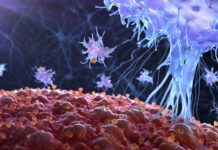Regenerative medicine is the next evolution of medical treatments. This new field holds the realistic promise of regenerating damaged tissues and organs in vivo (in the living body) through reparative techniques that stimulate previously irreparable organs into healing themselves. Regenerative medicine also empowers scientists to grow tissues and organs in vitro (in the laboratory) and safely implant them when the body is unable to be prompted into healing itself.

This revolutionary technology has the potential to develop therapies for previously untreatable diseases and conditions. Examples of diseases regenerative medicine can cure include diabetes, heart disease, renal failure, osteoporosis and spinal cord injuries. Virtually any disease that results from malfunctioning, damaged, or failing tissues may be potentially cured through regenerative medicine therapies. Having these tissues available to treat sick patients creates the concept of “tissues for life.
Unfortunately, far too many patients suffer from diseases for which there is no treatment. Regenerative medicine (RM) represents a paradigm shift in healthcare therapies and treatment by focusing on the underlying causes of disease by repairing, replacing, or regenerating damaged cells in the body.
Already, Japan, the European Union (EU), China and Australia have begun national initiatives and efforts to spur the advancement of their regenerative medicine programs.
To achieve the aggressive goal of tissues on demand within 20 years, the Federal Initiative for Regenerative Medicine (FIRM) is proposed.
How it works
Collectively, these treatments allow for two substantial advances over current medicine. The first advance is the potential to in vivo (in the living body) regenerate currently irreparably damaged tissues so that they return to full functionality. The second advance is to be able to produce tissues in vitro (in the laboratory) to be used for transplantation purposes when regeneration is not possible. This technology has the potential to cure diseases ranging from diabetes (through regeneration of islets) to the repair of cancerous tissues (by replacing the removed cancerous tissue with externally grown healthy tissue). By creating these “tissues for life,” regenerative medicine treatments will undoubtedly lead to a tremendous improvement in quality of life and healthcare.
What truly differentiates regenerative medicine from many current therapies is that regenerative medicine has the potential to provide a cure to failing or impaired tissues. Many of today’s increasing healthcare costs stem from recurring treatments for chronic diseases and their subsequent complications.
Regenerative medicine confronts this problem from multiple fronts. First, through regenerative therapies, diseases and conditions that result from tissue failure can be stopped and healed by regenerating the damaged tissues. This regeneration is brought on by therapies that prompt the body to heal itself by recruiting the proper reparative cells in vivo, or by implanting small amounts of engineered tissue “patches” that prompt the damaged tissues to heal. Regenerative medicine also holds promise in transplanting and growing replacement organs. With regenerative medicine, waiting for a tissue or organ transplant will become a worry of the past.
Culled from :crm.ed.ac.uk










